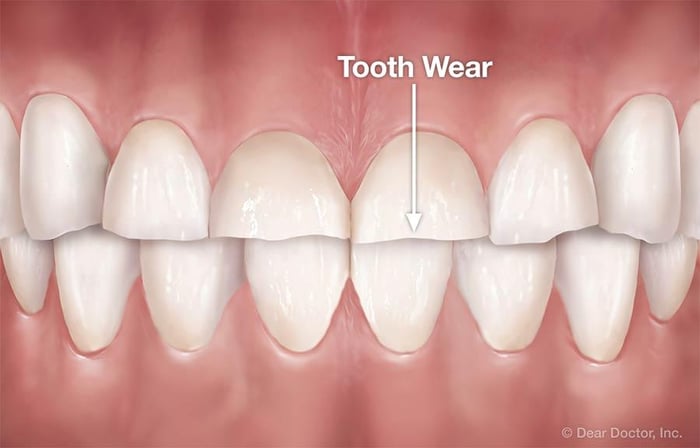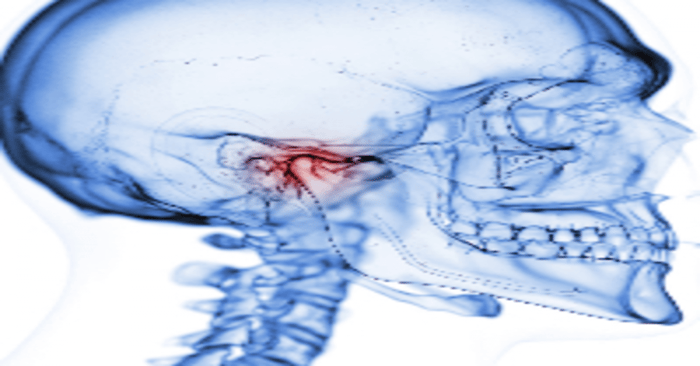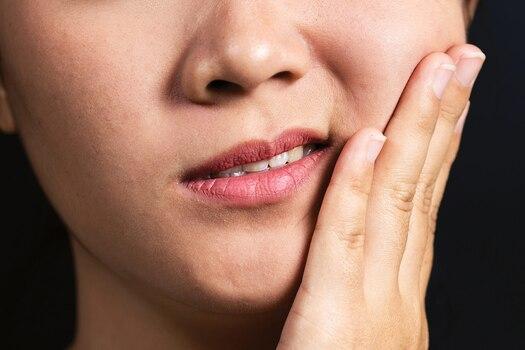If you are experiencing lightheadedness, fuzzy sight, and an underwhelming headache, chances are you blame these mild inconveniences on your lifestyle choice and do not usually seek treatment at the doctor’s clinic for them. However minor these symptoms may be, they can actually be a part of a much larger problem. Temporomandibular joint disorders (TMD) or derangements can often manifest as mild symptoms that mask the underlying severity of the condition.TMD affects millions of people every year because of simple neglect or conditional oblivion. These appear as mild arrays of headaches, earaches, neck tension, and facial pain, making up for tens of thousands of lost work days per year. Because these problems are gradual in appearance and often seem disassociated or unrelated, most TMD cases go undiagnosed until they progress to a more sinister form.
What is the temporomandibular joint?
The temporomandibular joint (TMJ) are the joints and jaw muscles that make it possible for you to open and close your mouth as well as allowing you to protrude, retrude, or move your jaw from side to side. Located on either side of the head, your TMJ works together in complex synchrony and coordination to help you chew, speak, and swallow. The TMJ houses a congregate of muscles, ligaments, discs, and bones.
Each TMJ has a disc between the ball and socket which cushions the load enabling the jaw to open widely and rotate or glide. Any problems that prevent this system to work either by the misalignment of the joints or other internal injuries may result in a painful TMJ disorder.
Symptoms of TMJ disorder
Signs and symptoms of TMD may be difficult to quantify as they are usually quite vague. Some of the manifestations of this disorder are:
Headaches, often mimicking migraines
Earaches and pressure behind the eyes
A clicking or “popping” sound when you open or close your mouth
Pain elicited when yawning, opening the mouth widely, or chewing
Jaws that “get stuck”, called lockjaw
Tenderness of the jaw muscles
A sudden shift in the way upper and lower teeth fit together
Myofascial pain with a tender knot or pain deep in the muscle
What causes a TMJ disorder?
There are varying accounts of the exact origin or cause of the TMJ disorders but researches have linked it to a number of risk factors that can cause damage to the temporomandibular joints. According to the American Dental Association (ADA), possible causes of temporomandibular joint disorders include arthritis, injury, posture, and bruxism (habitual grinding of your teeth consciously or subconsciously). Tooth and jaw alignment and stress can also initiate teeth grinding and further worsen the condition of TMD.
Diagnosis is the first step to correction. “Part of the dental examination includes checking the joints and muscles for tenderness, clicking, popping, or difficulty moving”, states the ADA. If simple lifestyle changes are not enough to treat or correct your TMD, your dentist may see you as a qualifying candidate for the use of mouth guards that significantly help lower and prevent the symptoms of TMD.
What are mouthguards and how can they help relieve TMD?
A mouthguard is a prosthetic device fitted into the mouth to cushion a blow or to minimize the risk of involuntary teeth grinding and clenching associated with sleep bruxism. Also known as a bite guard or a stabilization splint, it is made up of hard acrylic resin with a high tensile strength that prevents it from disfiguring with repeated use. Although there is no single treatment for TMD, usually also incorporating muscle-strengthening exercises and medications, getting a mouthguard can help minimize the pain produced by temporomandibular joint deformities.
Mouthguards come in varying shapes and sizes with “ready-to-use” varieties easily accessible at every pharmacy. In order to ensure that your teeth are properly protected and that the material is not flimsy and easy to wear, it is important for you to get a custom-made, well-fitted mouth guard personalized especially for you at the dentist’s office. With an accurate reading of your oral structures, the mouth guard customized for you by a dental professional fits snugly onto your upper teeth and prevents the unwanted forces or contact between teeth of the upper and lower jaw.
Some of the examples of mouthguards you may be recommended to prevent the symptoms of TMJ disorder are:
Stabilization or flat plane splint
This mouthguard covers the entire surface of the teeth in order to facilitate reduced grinding and maximize the relaxation of the jaw. This variety of mouthguards works well for teeth grinding but does not prevent teeth from clenching which means that although it may protect your teeth enamel from wearing, it has the potential to worsen the symptoms of TMD.
Modified Hawley splint
The modified Hawley splint is worn on the upper teeth. It creates an area of contact between the upper jaw and only the lower six front teeth, thus preventing the upper and lower rear teeth from touching each other. This position of teeth seating prevents the grinding and clenching patterns of a bruxer impossible to perform and relieves the pressure on the temporomandibular joint.
Nociceptive trigeminal inhibition tension suppression system (NTI-tss)
Bruxism, migraines, and TMJ dysfunction occur due to jaw muscle or nerve malfunction. The NTI-tss is an anterior bite stop that interrupts the involuntary push-and-pull between the jaw’s side and the temporal muscles. This helps successfully reduce the clenching intensity and reducing a barrage of negative impulses transmitted by the nerves. This device only creates contact between the upper front teeth and bottom teeth.
Repositioning splint
This form of mouthguard works by repositioning the lower jaw either backward or forward so that the aberrant contact of the jaws is eliminated. This helps relieve the pressure on the jaw and thus helps minimize the symptoms associated with TMD. However, a pivotal drawback of this style of mouthguard is that it may permanently change your bite. If you make use of this device for a short period of time and under the close supervision of the dentist, it should not cause any severe side-effects to your jaw.
If you are suffering from the painful symptoms of TMJ disorder, you should seek treatment as soon as possible. Visit your dentist to get a custom-made mouthguard for your TMD and ease your symptoms instantly.
 We Offer Prompt Customer Service Through
We Offer Prompt Customer Service Through 










